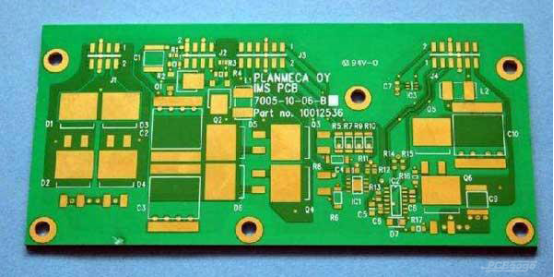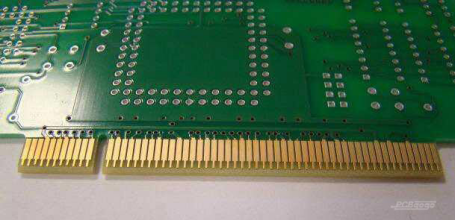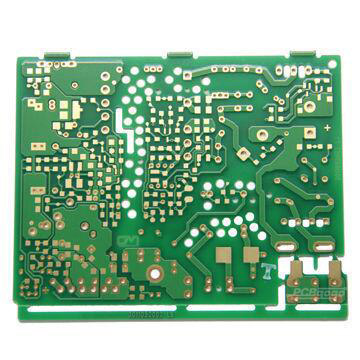How to Distinguish Between Immersion Gold And Gold Plating?
There are some normal treating process in PCB surface: bare board( not treating in the surface), flux, OSP(organic solderability preservative, it’s better than flux), HAL( hot air leveling, lead free HAL, lead HAL), plating gold, immersion gold and so on. However, immersion gold and gold plating are the technologies often used in PCB surface finish, there is a confusion about what is the difference between immersion gold and gold plating. Now PCBGOGO will explain for you.
What is immersion gold?
Immersion gold is a process that applies a very thin layer of gold with displacement of the surface atoms. It means the coating is not very thick, and it can be used for extending the shelf life of parts waiting for soldering operations because of corrosion resistance.
Immersion gold has been applied in aluminum and gold wire bonding and PCB fabrication. But it can’t be used to take place electrolytic gold plating because its thickness and adhesion are limited compared to a standard electroplated gold.

What is gold plating?
Gold plating, also known as electroplated, which is depositing a thin layer of gold on the surface over another metal through plating way. And gold particles are mainly attached to the circuit board because of the strong adhesion of gold plating, so it also called hard gold. As well as the memory of gold finger is hard gold with high hardness and wear-resistant.
The difference between immersion gold and gold plating
Gold is using for surface finish of PCB, such as key board and gold finger and so on, as the gold has a great conduction, strong oxidation resistance, long life. However, it is essential difference between plating gold and plating gold that plating gold is hard gold as well to resistance, but immersion gold is flexible gold which is on the contrary.
There are some differences between immersion gold and gold plating as follows:

1. Gold thickness in immersion gold board is more than that in a gold plating board. Immersion gold board is more yellow than a gold-plating board, that’ because gold-plating board has the color of nickel.
2. Their crystal structures are different. Comparatively speaking, immersion gold is easier to be soldered with less poor solder issues. Immersion gold board is easier to control the stress, which is benefit for the bonding products. At the same time, immersion gold has a poor anti - abrasion when doing gold finger as immersion gold is more flexible than plating gold.
3. Nickel is only used on immersion gold board’s pad, thus the signal transmission in the skin effect does not affect the signal at the copper layer.
4. The crystal structure of immersion gold is much denser than that in gold plating board, thus it is not easy to produce oxidation.
5. With the strict requirements for higher precision in PCB fabrication process, line width and spacing have below 0.1mm. Gold-plating board is easier to produce short circuit than immersion gold board.
6. Nickel is only used on immersion gold board’s pad, therefore solder resist on the circuit is solidly combined with the copper layer.
7.The flatness and service life of immersion gold board is better than the gold plating board.
Why use immersion gold?

When it comes to immersion gold and gold plating, a lot of PCB manufacturers is fabricated your circuit boards with immersion gold, because there is a poor solderability in plating gold.
However there are some advantages for immersion gold process in the printed circuit surface,such as stable deposition color, good brightness, measured plating, immersion gold plating with great solderability. There are four stage: pretreatment (cleaning, etching, activating, after dipping), immersion Ni, immersion gold, reprocessing (waste gold rinsing, DI rinse, drying). And the thickness of immersion gold is about 0.025-0.1μm.
